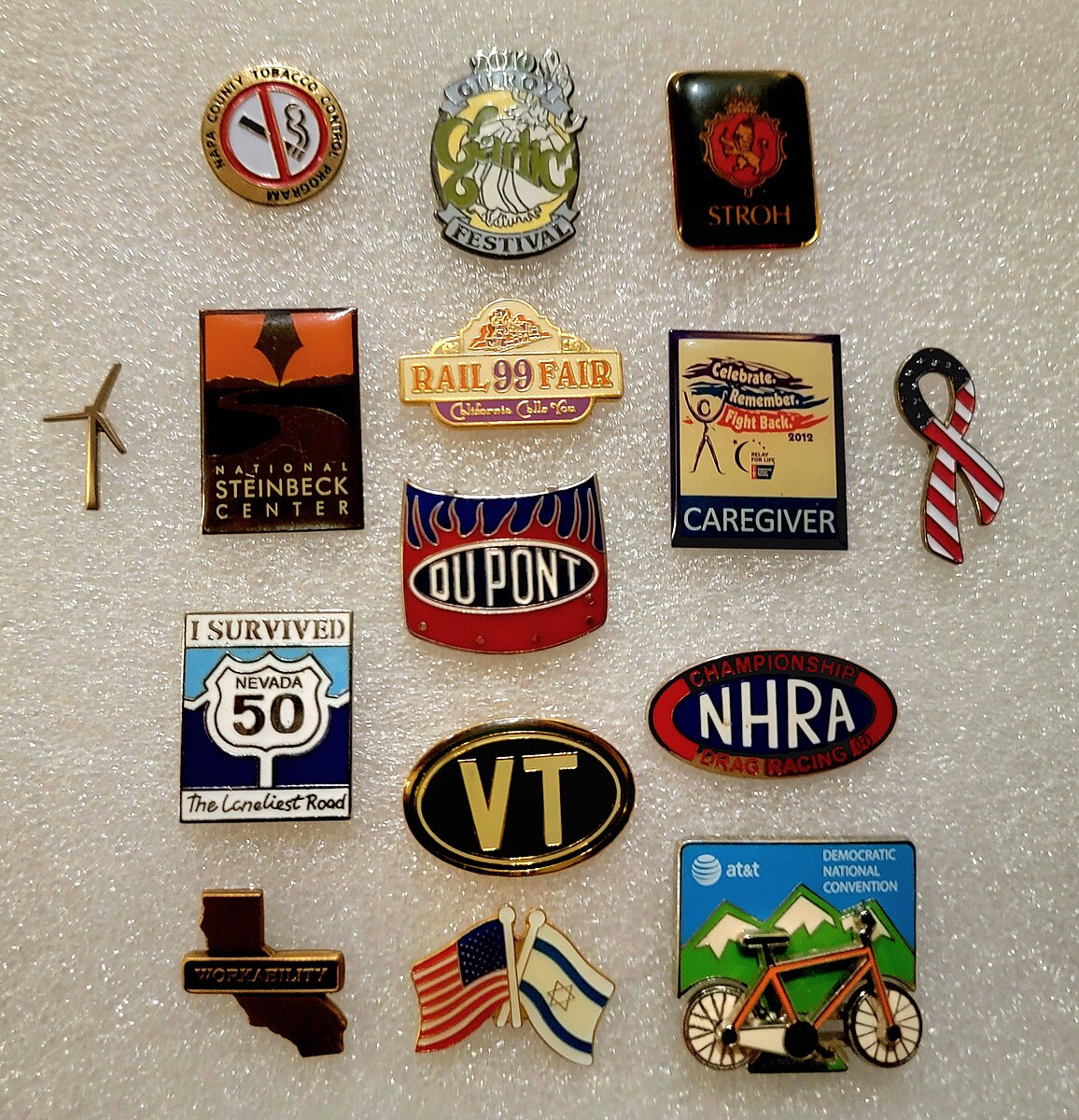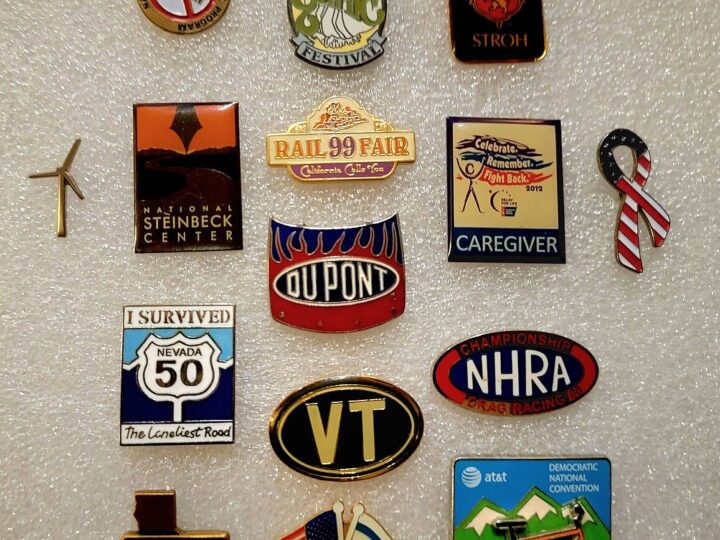
Did you know some lapel pins increase in value by 500% within ten years? I find these little emblems fascinating. They connect us to significant events, highlight our accomplishments and broadcast our identities. It is incredibly frustrating when a beloved pin gets bent out of shape, becomes tarnished or loses its clasp. My team and I are collectors and restorers. We understand how important it is to take care of these valuable items. This guide explains effective lapel pin repair, from straightening bent pins to preventing future damage. I will cover everything you need to know to maintain your pins.
Understanding Lapel Pin Anatomy
Before diving into lapel pin repair and cleaning techniques, you should understand the various parts of a lapel pin. Understanding the anatomy allows you to diagnose problems and select the appropriate repair methods.
- Pinback/Clasp: This secures the pin to clothing. Common types include butterfly clasps, rubber clutches and magnetic clasps.
- Pin Post/Needle: This sharp point goes through fabric.
- Pin Body/Design: This decorative front can be made of metal, enamel or plastic.
Common Problems and Solutions
Let us examine some typical problems pin enthusiasts encounter and discover how to address them using effective lapel pin repair strategies.
1. Straightening a Bent Pin Post
Bent pin posts are a common problem, especially with pins worn often or stored improperly. Fortunately, you can usually straighten them at home.
What to Do:
- Gentle Pressure: Put the pin on a flat, hard surface. Use your fingers or pliers (protected with a soft cloth) to apply gentle pressure to the bend. Work slowly and carefully, making small adjustments to prevent breaking the pin.
- Rolling Technique: Try rolling the pin post against a hard surface for minor bends. This can gradually straighten it.
Heads Up: The pin post might break if it is severely bent or made of brittle metal during straightening. Contact a jeweler or pin repair professional in this instance.
2. Cleaning Tarnished or Dirty Pin Bodies
Tarnish can make lapel pins look dull, particularly metal ones. Dirt and grime can also accumulate, obscuring the design.
What to Do:
- Soap and Water: Clean dirt and grime by dampening a soft cloth with soapy water. Rinse with clean water and dry it thoroughly.
- Metal Polish: Use a metal polish appropriate for the metal type for tarnished metal pins (silver polish for silver pins, for example). Carefully follow the product instructions and buff the pin to restore its shine.
- Baking Soda Paste: Create a natural cleaner by combining baking soda with a small amount of water to form a paste. Put the paste on the tarnished areas, let it sit for a few minutes and then gently scrub with a soft brush or cloth. Rinse well and dry completely.
Heads Up: Steer clear of abrasive cleaners or scrub brushes because they can mar the pin’s surface.
3. Replacing Missing Pin Backings
A lost or damaged pin backing renders the lapel pin unwearable. Luckily, replacements are easy to find and install, making this a simple lapel pin repair.
What to Do:
- Purchase a Replacement: Replacement pin backings are available at most craft stores, online retailers and pin specialty stores. Select a backing compatible with the pin’s post type (butterfly clasp or rubber clutch).
- Opt for Magnetic: Magnetic backings offer extra security, are less likely to damage clothing and are suitable for delicate fabrics.
Pro Tip: Always have extra replacement backings available so you can replace lost ones easily.
4. Repairing Scratched or Faded Enamel
Enamel pins are susceptible to scratches and fading, especially when exposed to sunlight or rough handling.
What to Do:
- Gentle Cleaning: Gently wipe the enamel with a soft, damp cloth. Refrain from harsh chemicals or abrasive cleaners.
- Enamel Repair Kits: Use an enamel repair kit for deeper scratches. These kits usually include colored enamel filler and polishing tools. Carefully follow the instructions.
- Protective Coating: Prevent future scratches by putting a thin coat of clear nail polish or enamel sealant on the pin.
Heads Up: You should talk to a pin restorer if the enamel is severely damaged or faded.
5. Securing a Loose Pin Post
Sometimes, the pin post can detach from the pin, making it unstable.
What to Do:
- Epoxy Application: Put a small amount of epoxy on the base of the pin post where it connects to the pin. Make sure the epoxy does not get on any visible areas.
- Secure in Place: Use a clamp or clothespin to hold the pin post while the epoxy cures. Follow the recommended curing time.
Heads Up: Use an epoxy designed for bonding metal to metal.
Maintaining Pins
Prevention beats any cure. Proper care and storage will extend the life of lapel pins and reduce repairs.
1. Proper Storage
How pins are stored can affect their look. Follow these storage guidelines:
- Individual Storage: Store pins in separate bags or boxes to prevent scratching.
- Soft Linings: Use containers with soft linings to protect pins from damage.
- Avoid Humidity: Store pins in a dry environment to prevent tarnish or corrosion.
- Display Cases: Use display cases with covers to protect pins from dust and sunlight. I use a UV protection display case, which prevents fading.
2. Regular Cleaning
Regular cleaning stops dirt and tarnish from building up, helping to maintain your pins.
- Quick Wipe: Wipe pins with a soft, dry cloth after wearing to remove any dirt or moisture.
- Deep Cleaning: Clean pins thoroughly using the methods described above for tarnished or dirty pin bodies.
3. Careful Handling
Handle pins with care to avoid bending the post or scratching the surface.
- Avoid Force: Do not use excessive force when attaching or removing a pin.
- Secure Backing: Make sure the pin backing is secure to prevent the pin from falling off and getting damaged.
- Fabric Considerations: Think about the fabric being pinned. Delicate fabrics can get pinholes.
4. Enamel Pin Care
Enamel pins require special care because they are delicate.
- Avoid Rough Surfaces: Keep enamel pins away from abrasive surfaces.
- Sunlight Sensitivity: Long sun exposure can cause enamel pin colors to fade. Store them in a dark place when they are not in use.
- Chemical Avoidance: Do not let enamel pins contact harsh chemicals like cleaning solvents or perfumes.
When to Seek Professional Services
You can fix many lapel pin issues at home. However, some issues require the expertise of a jeweler or pin restorer.
1. Broken Pin Post Repair
You will need a professional to reattach the pin post if it is completely broken. A jeweler can solder a new pin post onto the pin, making it strong and durable.
2. Enamel Damage Repair
Professionals can fix chipped, cracked or faded enamel. This often involves filling the damaged areas with new enamel and carefully matching the colors.
3. Complex Metal Work
Jewelers can perform intricate metal repairs, like soldering, welding or metal plating, on pins that are bent, broken or corroded.
4. Antique or Sentimental Pins
Always get professional help for antique or sentimental pins to prevent causing further damage. Professionals know how to handle these delicate items with care.
Homemade Cleaning Solutions
Here are a few easy to make cleaning solutions you can try for lapel pin repair and maintenance.
1. Lemon Juice and Salt Solution
This mixture effectively removes tarnish from metal pins. The acid in lemon juice dissolves the tarnish, while the salt acts as a mild abrasive.
Instructions:
- Combine equal parts lemon juice and salt to make a paste.
- Put the paste on the tarnished areas of the pin.
- Let it sit for 10 to 15 minutes.
- Gently scrub with a soft brush or cloth.
- Rinse thoroughly and dry completely.
2. Vinegar and Baking Soda Solution
Vinegar and baking soda create a fizzing action that lifts dirt and tarnish.
Instructions:
- Pour a small amount of vinegar over the pin.
- Sprinkle baking soda over the vinegar.
- Let it fizz briefly.
- Gently scrub with a soft brush or cloth.
- Rinse thoroughly and dry completely.
3. Olive Oil Treatment
Olive oil can polish and protect metal pins, restoring their shine and preventing future tarnishing.
Instructions:
- Put a small amount of olive oil on a soft cloth.
- Gently rub the cloth over the pin.
- Buff with a clean, dry cloth.
Pin Safety Tips
Losing a lapel pin, particularly one with sentimental value, can be upsetting. Here are some tips to keep pins securely attached to clothing:
1. Use Locking Pin Backs
Locking pin backs stop pins from detaching without you noticing. They usually have a spring that secures the pin.
2. Add Pin Keepers
Pin keepers are small rubber or metal pieces that slide onto the pin post for extra security, preventing the pin from turning or falling off.
3. Apply Fabric Glue
Apply a small amount of fabric glue to the back of the pin backing for reinforcement for pins worn frequently on delicate fabrics. Let the glue dry completely before attaching the pin to clothing.
4. Fabric Selection
The fabric type affects how secure the pin is. Tightly woven fabrics offer a better hold than loosely woven ones.
The Importance of Care
Lapel pin repair and care involves more than just fixing damage. Pins often hold personal significance, representing memories, achievements or affiliations. A pin might commemorate a special occasion, signify club membership or express personal style.
Losing or damaging a lapel pin can feel like losing a part of yourself. Repairing and maintaining these small keepsakes matters. We preserve memories this way.
Sarah, a team member, had a pin from her grandfather’s military service that she treasured. She was heartbroken when the backing broke. Repairing it felt like bringing him back. That is the power of a lapel pin. Repairing lapel pins preserves stories.
So what is the takeaway? Proper lapel pin care, from cleaning to repairs, keeps memories and personal style alive. Maintain pins for years to come using these tips. Contact a professional if you are ever unsure about a repair method. Lapel pins are worth the effort.



